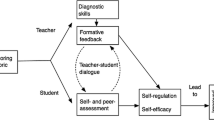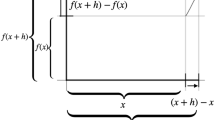ABSTRACT
Within the domain of geometry, proof and proof development continues to be a problematic area for students. Battista (2007) suggested that the investigation of knowledge components that students bring to understanding and constructing geometry proofs could provide important insights into the above issue. This issue also features prominently in the deliberations of the 2009 International Commission on Mathematics Instruction Study on the learning and teaching of proofs in mathematics, in general, and geometry, in particular. In the study reported here, we consider knowledge use by a cohort of 166 Sri Lankan students during the construction of geometry proofs. Three knowledge components were hypothesised to influence the students’ attempts at proof development: geometry content knowledge, general problem-solving skills and geometry reasoning skills. Regression analyses supported our conjecture that all 3 knowledge components played important functions in developing proofs. We suggest that whilst students have to acquire a robust body of geometric content knowledge, the activation and the utilisation of this knowledge during the construction of proof need to be guided by general problem-solving and reasoning skills.
Similar content being viewed by others
References
Anderson, J. R. (1995). Learning and memory: An integrated approach. New York: Wiley.
Battista, M. T. (2007). The development of geometric and spatial thinking. In F. Lester (Ed.), Second handbook of research on mathematics teaching and learning (vol. 2) (pp. 843–908). Charlotte: Information Age Publishing.
Bertholda, K., Nückles, M. & Renkl, A. (2007). Do learning protocols support learning strategies and outcomes? The role of cognitive and metacognitive prompts? Learning and Instruction, 17(5), 564–577.
Chazan, D. (1993). High school geometry students’ justification for their views of empirical evidence and mathematical proof. Educational Studies in Mathematics, 24(4), 359–387.
Chi, M. T. H., Feltovich, P. J. & Glaser, R. (1981). Categorization and representation of physics problems by experts and novices. Cognitive Science, 5, 121–152.
Chinnappan, M. & Lawson, M. J. (1996). The effect of training in use of executive strategies in geometry problem solving. Learning and Instruction, 6(1), 1–17.
Clements, D. H. & Battista, M. T. (1992). Geometry and spatial reasoning. In D. A. Grouws (Ed.), Handbook of research on mathematics teaching and learning (pp. 420–464). New York: Macmillan.
Duval, R. (2007). Cognitive functioning and the understanding of mathematical processes of proof. In P. Boero (Ed.), Theorems in school. From history, epistemology and cognition to classroom practice (pp. 137–162). Rotterdam: Sense Publishers.
English, L. (1992). Children’s use of domain-specific knowledge and domain-general strategies in novel problem solving. The British Journal of Educational Psychology, 62(2), 203–216.
Francis, G. (2001). Introduction to SPSS for Windows. Sydney: Pearson.
Hair, J. F., Black, B., Babin, N., Anderson, R. E. & Tatham, R. L. (2006). Multivariate data analysis (6th ed.). New Jersey: Prentice-Hall.
Hanna, G. (2000). Proof, explanation and exploration: An overview. Educational Studies in Mathematic, 44, 5–23.
Harel, G. & Sowder, L. (2007). Toward comprehensive perspectives on the learning and teaching of proof. In F. Lester (Ed.), Second handbook of research on mathematics teaching and learning (vol. 2) (pp. 805–842). Charlotte: Information Age Publishing.
Healy L., & Hoyles, C. (1998). Justifying and proving in school mathematics. Summary of the results from a survey of the proof conceptions of students in the UK. Retrieved from http://www-didactique.imag.fr/preuve/Resumes/Healy/Healy98.html.
Herbst, P. G. (2002). Engaging students in proving: A double bind on the teacher. Journal for Research in Mathematics Education, 33(3), 176–203.
Hershkowitz, R., Dreyfus, T., Ben-Zvi, D., Friedlander, A., Hadas, T. & Resnick, T. (2002). Mathematics curriculum development for computerized environments: A designer–researcher–teacher–learner activity. In L. D. English (Ed.), Handbook of international research in mathematics education (pp. 657–694). Mahwah: Erlbaum.
Hilbert, T. S., Renkl, A., Kessler, S. & Reiss, K. (2008). Learning to prove in geometry: Learning from heuristic examples and how it can be supported. Learning and Instruction, 18(4), 285–312.
Koedinger, K. R. & Anderson, J. R. (1993). Reifying implicit planning in geometry: Guidelines for model-based intelligent tutoring systems design. In S. P. Lajoie (Ed.), Computers as cognitive tools (pp. 15–45). New Jersey: Erlbaum.
Lawson, M. J. (1989). The case for instruction in the use of general problem solving strategies in mathematics teaching: A comment on Owen and Sweller. Journal for Research in Mathematics, 90, 21–25.
Martin, T. S., McCrone, S., Bower, M. & Dindyal, J. (2005). The interplay of teacher and student actions in the teaching and learning of geometric proof. Educational Studies in Mathematics, 60(1), 95–124.
McCrone, S. S. & Martin, T. S. (2004). Assessing high school students’ understanding of geometric proof. Canadian Journal for Science, Mathematics, and Technology Education, 4(2), 223–242.
National Council of Teachers of Mathematics (2000). Principles and standards for school mathematics. Reston: National Council of Teachers of Mathematics.
Reiss, K., Hellmich, F. & Reiss, M. (2002). Reasoning and proof in geometry: Prerequisites of knowledge acquisition in secondary school students. In A. D. Cockburn & E. Nardo (Eds.), Proceedings of the 26th Conference of the International Group for the Psychology of Mathematics Education (vol. 4) (pp. 113–120). Norwich: PME.
Schoenfeld, A. H. (1985). Mathematical problem solving. California: Academic.
Schoenfeld, A. H. (1992). Learning to think mathematically: Problem solving, metacognition, and sense making in mathematics. In D. A. Grouws (Ed.), Handbook of research on mathematics teaching and learning (pp. 165–197). New York: Macmillan.
Senk, S. (1985). How well do students write geometry proofs. Mathematics Teacher, 78, 448–456.
Senk, S. L. (1989). van Hiele levels and achievement in writing geometry proofs. Journal of Research in Mathematics Education, 20(3), 309–321.
Solomon, Y. (2006). Deficit or difference: The role of students’ epistemologies of mathematics in their interactions with proof. Educational Studies in Mathematics, 61(3), 373–393.
Swanson, H. L. (1990). Influence of metacognitive knowledge and aptitude on problem solving. Journal of Educational Psychology, 82(2), 306–314.
Sweller, J. (1989). Cognitive load during problem solving: Effects on learning. Cognitive Science, 12, 257–285.
Ufer, S., Heinze, A. & Reiss, K. (2009). What happens in students’ minds when constructing a geometric proof? A cognitive model based on mental models? In F. L. Lin, F. J. Hsieh, G. Hanna & M. de Villiers (Eds.), Proceedings of the ICMI Study 19 Conference: Proof and Proving in Mathematics Education (vol. 2) (pp. 239–244). Taipei: National Taiwan Normal University Press.
van der Stel, M. & Veenman, M. V. J. (2008). Relation between intellectual ability and metacognitive skilfulness as predictors of learning performance of young students performing tasks in different domains. Learning and Individual Differences, 18, 128–134.
van Hiele, P. M. (1999). Developing geometric thinking through activities that begin with play. Teaching Children Mathematics, 5(6), 310–315.
Veenman, M. V. J. & Beishuizen, J. J. (2004). Intellectual and metacognitive skills of novices while studying texts under conditions of text difficulty and time constraint. Learning and Instruction, 14(6), 621–640.
Yang, K. L. & Lin, F. L. (2008). A model of reading comprehension of geometry proof. Educational Studies in Mathematics, 67, 59–76.
Zohar, A. & Peled, B. (2008). The effects of explicit teaching of metastrategic knowledge on low- and high-achieving students. Learning and Instruction, 18(4), 337–353.
Author information
Authors and Affiliations
Corresponding author
Rights and permissions
About this article
Cite this article
Chinnappan, M., Ekanayake, M.B. & Brown, C. KNOWLEDGE USE IN THE CONSTRUCTION OF GEOMETRY PROOF BY SRI LANKAN STUDENTS. Int J of Sci and Math Educ 10, 865–887 (2012). https://doi.org/10.1007/s10763-011-9298-8
Received:
Accepted:
Published:
Issue Date:
DOI: https://doi.org/10.1007/s10763-011-9298-8




